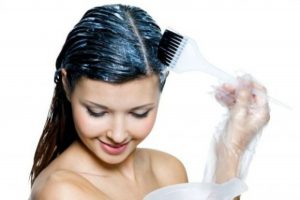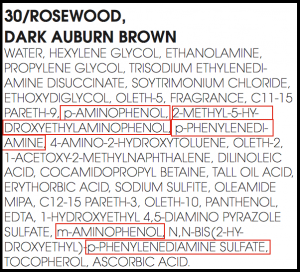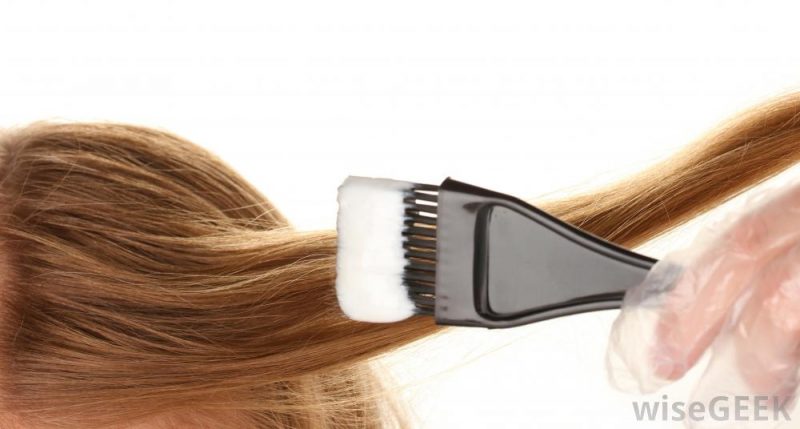This is the 2nd article of a multi-part series on becoming more aware of the chemicals that we interface with on a daily basis, and what control we do have to better our environment and our bodies. If you’ve not read it yet, check out my first article called Living a Toxin Free Lifestyle, where I set the stage for how this journey for me began.
______________________________________
Since the impetus for my living a toxin-free lifestyle started with my hair loss dilemma, I thought it appropriate to share with you my research on toxic chemicals found in most hair dyes.
According to a European Commission report of 2006, not one hair dye brand has proven to be consumer safe. Not One! In fact the EU Commission has already banned 22 ingredients that may still be found in many products sold outside of Europe, and the commission is in the process of investigating another 115 potentially harmful ingredients.
The side effects of those banned-in-Europe chemicals range from severe allergies, skin, eye, throat and lung irritation, and rheumatoid arthritis to cancer of the bladder.
 The full list is at the end of this article, but thought I should introduce to you some of the more dangerous culprits:
The full list is at the end of this article, but thought I should introduce to you some of the more dangerous culprits:
- PPD – PPD is short for para-phenylenediamine. It is used as a dye for dark color shades and is made from coal tar, a petroleum-derived chemical that includes benzene, naphthalene, phenols, aniline, and other chemicals. It is also used as a wood preservative, and contact with skin is best to be avoided. Research states PPD in combination with Hydrogen Peroxide is very toxic and can lead to cancer.
- Hydrogen Peroxide – Hydrogen Peroxide is mostly used to strip the natural color away, before applying the hair dye color. It is said to change the hair structure and make it brittle stripping it of its natural luster.
- Ammonia – Ammonia is used to open up the hair’s cuticle (the outer layer of the hair) so the dyes can come into the shaft (the inside of the hair). It may produce caustic burns and lung irritation.
- DMDM Hydantoin – DMDM Hydantoin is a preservative that slowly releases the toxic formaldehyde chemical, the longer it sits on the shelves. It may cause tissue irritation and affect the immune system. DMDM Hydantoin kills off fungi, yeasts and bacteria and it’s also used in herbicides, floor waxes, polymers, color photography, latex paints, cutting oils, adhesives, copying paper, and inks.
- Parabens – The two most common parabens preservatives are Methylparabens and Propylparabens. They are widely used in hair care products and can produce severe allergies and skin irritation.
- Lead Acetate – Lead Acetate is used as a color additive for the dark shade hair dyes. It is said to cause anemia and produce neurological problems.
- Resorcinol – Resorcinol is a toxic dye that can cause scalp irritation, and is an allergen affecting the endocrine system.
The list of 22 hair dye chemicals banned by the European Commission.

Ingredients List from a Popular Hair Coloring Product
- 6-Methoxy-2,3-Pyridinediamine and its HCl salt
- 2,3-Naphthalenediol
- 2,4-Diaminodiphenylamine
- 2,6-Bis(2-Hydroxyethoxy)-3,5-Pyridinediamine
- 2-Methoxymethyl-p-Aminophenol
- 4,5-Diamino-1-Methylpyrazole and its HCl salt
- 4,5-Diamino-1-((4-Chlorophenyl)Methyl)-1H-Pyrazole Sulfate
- 4-Chloro-2-Aminophenol 4-Hydroxyindole
- 4-Methoxytoluene-2,5-Diamine and its HCl salt
- 5-Amino-4-Fluoro-2-Methylphenol Sulfate
- N,N-Diethyl-m-Aminophenol
- N,N-Dimethyl-2,6-Pyridinediamine and its HCl salt
- N-Cyclopentyl-m-Aminophenol
- N-(2-Methoxyethyl)-p-phenylenediamine and its HCl salt
- 2,4-Diamino-5-methylphenetol and its HCl salt
- 1,7-Naphthalenediol
- 3,4-Diaminobenzoic acid
- 2-Aminomethyl-p-aminophenol and its HCl salt
- Solvent Red 1 (CI 12150)
- Acid Orange 24 (CI 20170)
- Acid Red 73 (CI 27290)
Do you color your hair? Take a look at the ingredients list on your product. How many of the above chemicals do you see?
If you do color your hair and after reading this post are feeling dejected and don’t know where to turn, don’t fret! I too was where you are and found some wonderful, truly safe solutions that actually WORK. Make sure you’re on our Mailing List, as I’ll be following up with that info and MORE in future posts in this series.
If you have any questions, or can offer some great insights into what you’ve learned, or your experience come join the conversation over on our Facebook Page.
– Written by Van Nguyen


